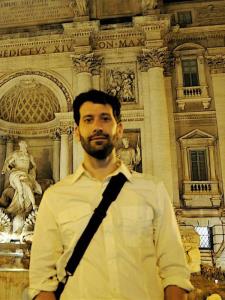Meghan C. answered • 11/24/23
Fun, Engaging, and Energetic Tutor! Math, ELA, Test Prep and More!
Humanities: Literature, art, film, music, philosophy
Passages of text or lines of a poem.
Details from an image, a film, or a work of art.
Passages of a musical composition.
Critical essays that analyze original works.
Humanities: History Social Sciences:
Primary sources such as photographs, letters, maps, and government documents.
Scholarly books and articles that interpret evidence.
Social Sciences: Psychology, sociology, political science, anthropology
Data from original experiments.
Results of field research such as interviews, observations, or surveys.
Statistics from government agencies.
Scholarly books and articles that interpret data from original experiments and from
other researchers’ studies.
The lens as the term is named after, deals with a particular stream or study in the analysis of a piece of art. These lenses magnify the central aspect with respect to the lens apart from the overall analysis of the work of art. The four lenses of liberal arts are historical lens, social science lens, humanities lens and natural science lens. Each lens has its own respective characteristics that it highlights in a work of art. These works, mainly literal works are often studied from one or more of these lenses for research and analytical purposes.
In general terms, a historical lens refers to the study and analysis of art from the historical perspective. This simply means that the past of humanity is studied through books, collected records like writings, pamphlets, newspapers and much more. Here, the main focus is the past and the pattern of a certain event or occurring from past to the present.
The humanities lens deals with human actions and works. The way human beings act, behave, live are the main concerns in this lens. This often includes philosophy, theology, philology and others. The social science lens basically deals with human interactions on a social level. The way human beings act in a society, with their peers, families, friends, neighbors and others is the central focal point of the social science lens.
The natural science lens, as the name suggests, deals with the natural world apart from human beings and their behaviors. That is, the laws of the natural world and the subjects that focus on these are concentrated here. For instance, physics, chemistry and biology are scientific aspects, geology, oceanography, astronomy are geographical aspects. These are the aspects that are given importance in the natural sciences.
These four lenses are often found with similar different aspects from each other. The social and humanities lens deals with the human behavior and actions in general, but are narrowed down to social behavior and general behavior when it comes to the difference. The historical and social lenses could be seen similar in the aspect that they both deal with human life and culture in various parts of the world, but one is about the past and the other is about the present and general conditions. The humanities and natural sciences are different because one focuses on people and the other focuses on the environment and the world.
In this way, all the four lenses have their own unique properties as well as shared properties with each other. These four lenses facilitate the better analysis of any piece of art like paintings, sculpture, writings like poems and stories and much more.





